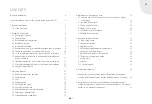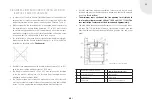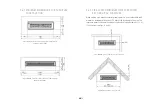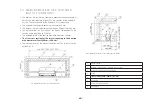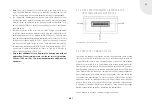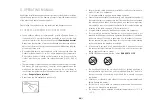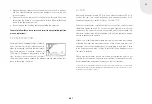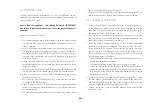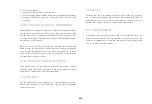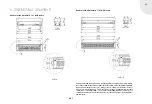
GB
GB
13
• Note:
The air inlet opening (5) can be located at the front, back, left or
right side of the fireplace structure. It is important that the free air cross
section is complied with to assure optimum cooling for the appliance.
• The combustion chamber must be made of vermiculite slabs or calcium
silicate slabs with a material thickness of at least 40 mm. These building
materials must be approved by the German Institute of Building Tech-
nology in Berlin (DIBt), to verify their suitability for use as combustion
chamber lining.
• Thermal insulation in the form of mats, slabs or pipe sections made
of silicate-based insulation materials (rock, slag and ceramic fibres) in
building material class A1 as defined in DIN 4102 Part 1, and that must
have an upper application boundary temperature of at least 700°C after
testing in accordance with DIN 52271, and must also have a nominal
raw density of 80 kg/m³ must be used. These materials must have a
corresponding insulation material ID code in accordance with AGI-Q 132
(the details of thermal insulation thickness in Figs. 9a & 9b refer to
mineral wool, as defined in AGI Q 132).
• Ensure that additional air can flow into the housing area without
obstruction. Free minimum cross section for inlet air measures
200 cm
2
/ 400 cm
2
. For this, provide appropriate additional air
apertures.
2.7.2 FIRE SAFETY/MINIMUM DISTANCES FOR
CRAFTSMAN-BUILT FIREPLACES
2.8 SUPPLY OF COMBUSTION AIR
Your ebios-fire removes combustion air from the installation space (closed
flue). Ensure that the installation room has a sufficient supply of fresh air.
It is possible that there is not a sufficient supply of fresh air if the windows
and doors are sealed (e.g. in combination with energy saving measures).
Please therefore note without fail the required air exchange rate, the maxi-
mum permitted duration for combustion, and comply with the specified room
sizes. Failure to do the above can compromise your well-being (headaches,
poor concentration) and, under certain circumstances, also your safety and
the combustion performance. To protect yourself against these hazards,
appliances similar to smoke detectors can be purchased from specialist
dealers. These warn of excessively high carbon monoxide concentrations.
In addition, air quality indicators are advisable. These analyse the carbon
dioxide concentration as well as measuring the temperature.
Open a window to ensure a sufficient supply of fresh air.
Fig. 10 Minimum distances from combustible components



